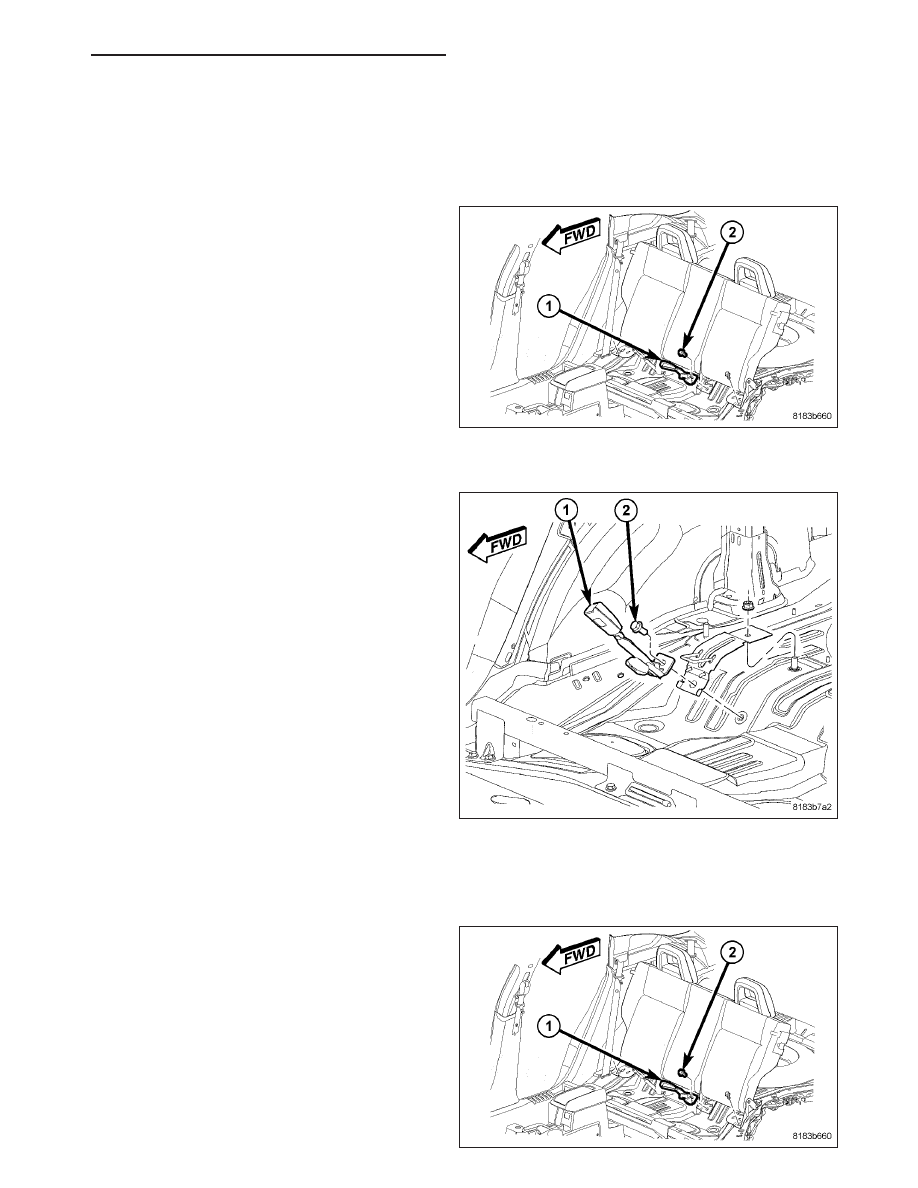Dodge Caliber. Manual - part 502

REAR SEAT BELT BUCKLE
REMOVAL
CENTER/LEFT BUCKLE
1. Remove the rear seat cushion (Refer to 23 -
BODY/SEATS/REAR
SEAT
CUSHION
-
REMOVAL)
2. Remove the left and center seatbelt buckle retain-
ing bolt (2).
3. Remove the left and center seatbelt buckle (1) from
the vehicle.
RIGHT BUCKLE/CENTER SEAT BELT ANCHOR LATCH
1. Remove the rear seat cushion (Refer to 23 -
BODY/SEATS/REAR
SEAT
CUSHION
-
REMOVAL).
2. Remove the right buckle/center seatbelt anchor
latch retaining bolt (2).
3. Remove the right buckle/center seatbelt anchor
latch (1) from the vehicle.
INSTALLATION
CENTER/LEFT BUCKLE
1. Position the buckle (1) over the left inner seat back
hinge and install the retaining bolt (2). Tighten bolt
to 56 N·m (41.5 ft. lbs.).
2. Install the rear seat cushion (Refer to 23 - BODY/
SEATS/REAR SEAT CUSHION - INSTALLATION).
PM
RESTRAINTS - SERVICE INFORMATION
8O - 405